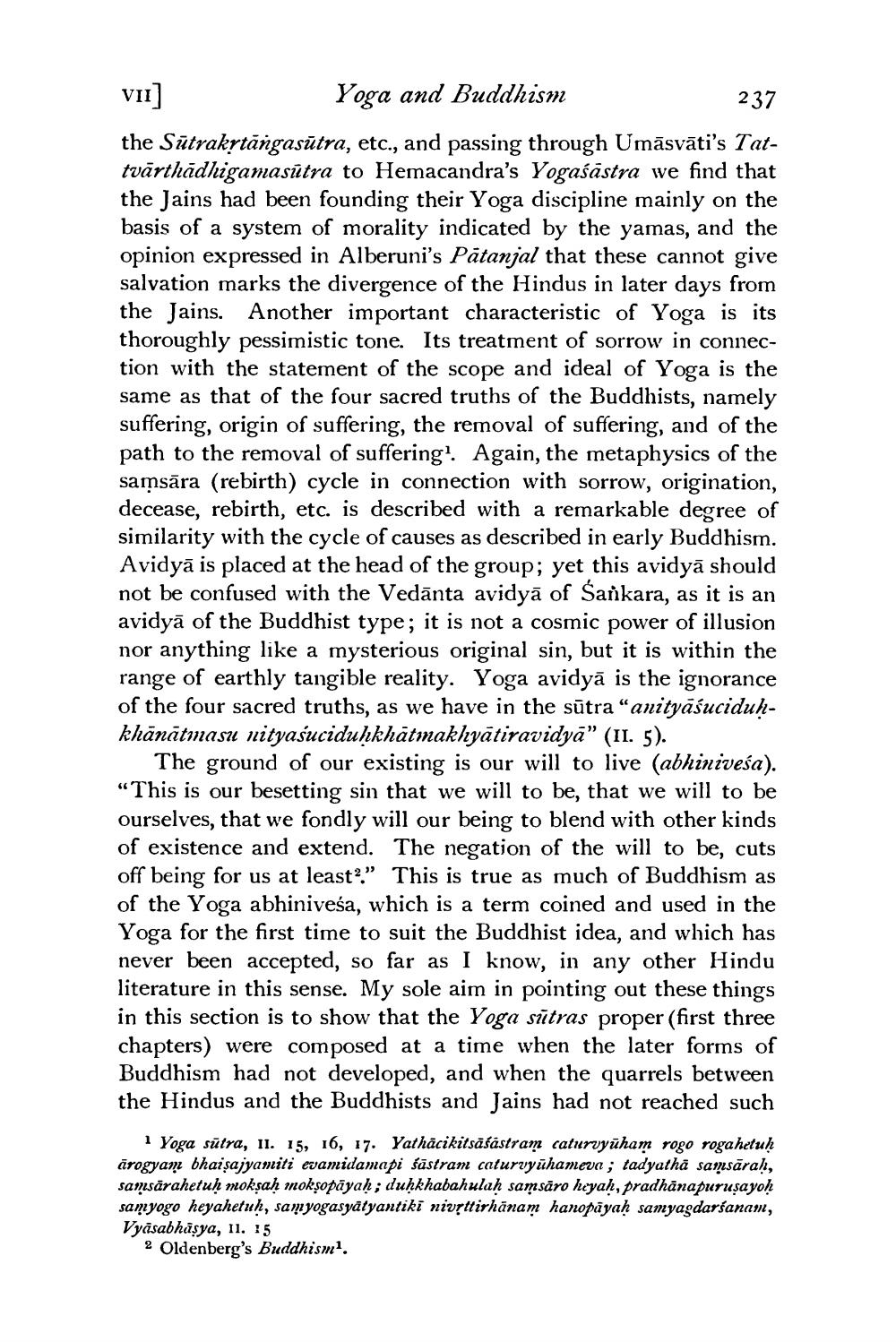________________
VII]
Yoga and Buddhism
237
the Sūtrakṛtāngasūtra, etc., and passing through Umāsvāti's Tattvarthadhigamasutra to Hemacandra's Yogaśastra we find that the Jains had been founding their Yoga discipline mainly on the basis of a system of morality indicated by the yamas, and the opinion expressed in Alberuni's Patanjal that these cannot give salvation marks the divergence of the Hindus in later days from the Jains. Another important characteristic of Yoga is its thoroughly pessimistic tone. Its treatment of sorrow in connection with the statement of the scope and ideal of Yoga is the same as that of the four sacred truths of the Buddhists, namely suffering, origin of suffering, the removal of suffering, and of the path to the removal of suffering1. Again, the metaphysics of the samsara (rebirth) cycle in connection with sorrow, origination, decease, rebirth, etc. is described with a remarkable degree of similarity with the cycle of causes as described in early Buddhism. Avidya is placed at the head of the group; yet this avidya should not be confused with the Vedanta avidyā of Śankara, as it is an avidya of the Buddhist type; it is not a cosmic power of illusion nor anything like a mysterious original sin, but it is within the range of earthly tangible reality. Yoga avidyā is the ignorance of the four sacred truths, as we have in the sūtra "anityāśuciduḥkhānātmasu nityasuciduḥkhātmakhyatiravidyā" (II. 5).
The ground of our existing is our will to live (abhiniveśa). "This is our besetting sin that we will to be, that we will to be ourselves, that we fondly will our being to blend with other kinds of existence and extend. The negation of the will to be, cuts off being for us at least"." This is true as much of Buddhism as of the Yoga abhiniveśa, which is a term coined and used in the Yoga for the first time to suit the Buddhist idea, and which has never been accepted, so far as I know, in any other Hindu literature in this sense. My sole aim in pointing out these things in this section is to show that the Yoga sutras proper (first three chapters) were composed at a time when the later forms of Buddhism had not developed, and when the quarrels between the Hindus and the Buddhists and Jains had not reached such
1 Yoga sutra, II. 15, 16, 17. Yathācikitsāśāstram caturvyuham rogo rogahetuḥ arogyam bhaiṣajyamiti evamidamapi sastram caturvyuhameva; tadyatha samsaraḥ, samsarahetuḥ mokṣaḥ mokṣopayaḥ; duḥkhabahulaḥ samsaro heyaḥ, pradhānapuruṣayoḥ samyogo heyahetuḥ, samyogasyatyantiki nivṛttirhānam hanopāyaḥ samyagdarśanam, Vyasabhaṣya, 11. 15
2 Oldenberg's Buddhism1.




